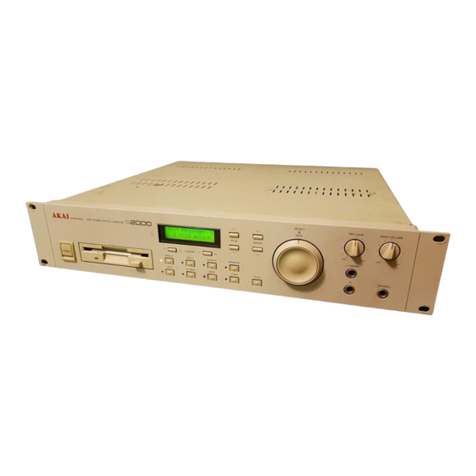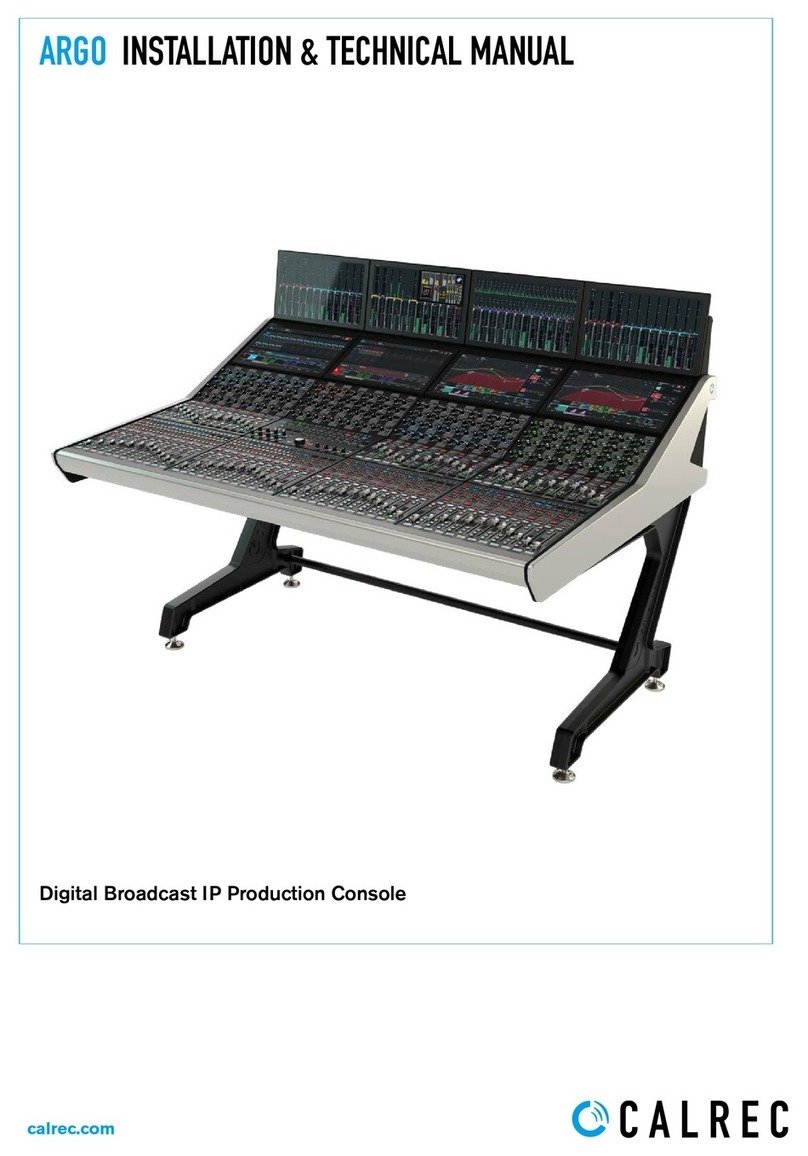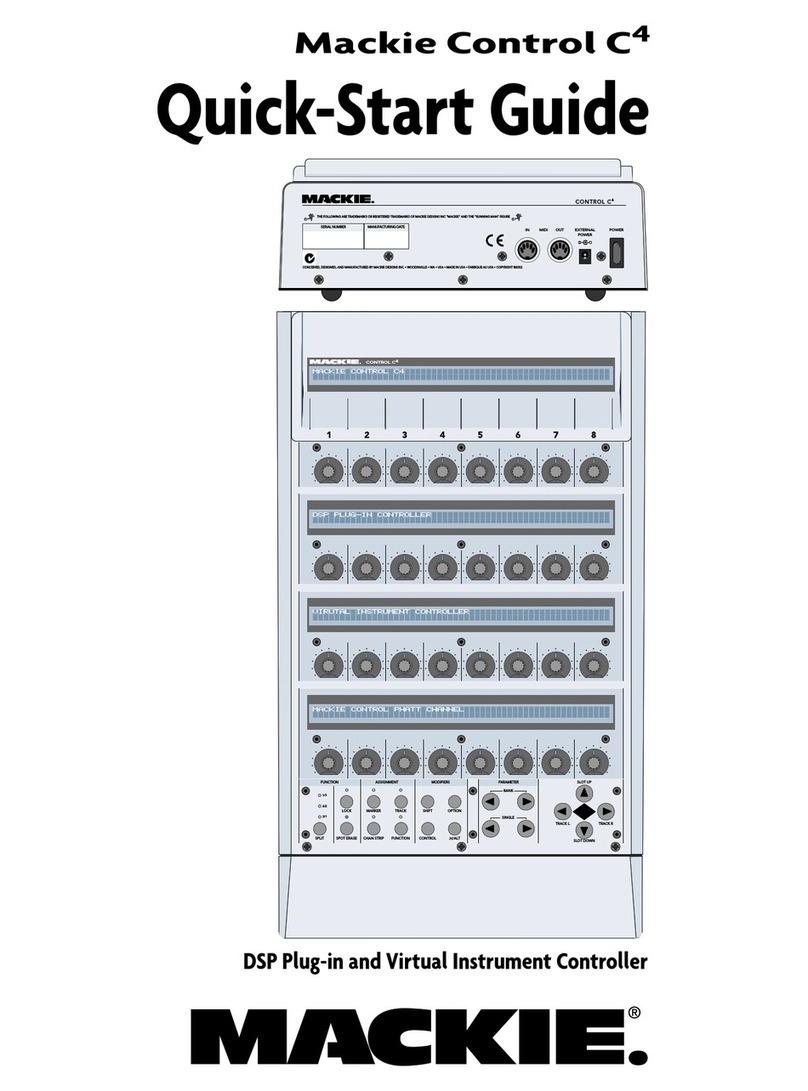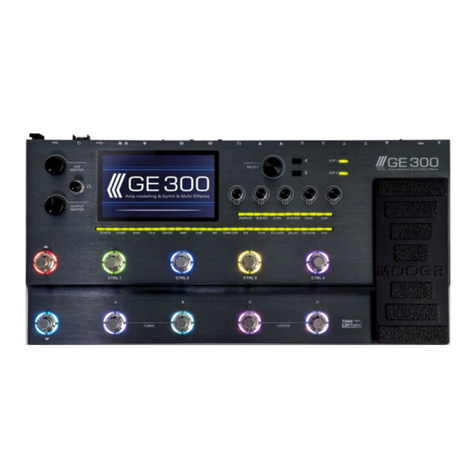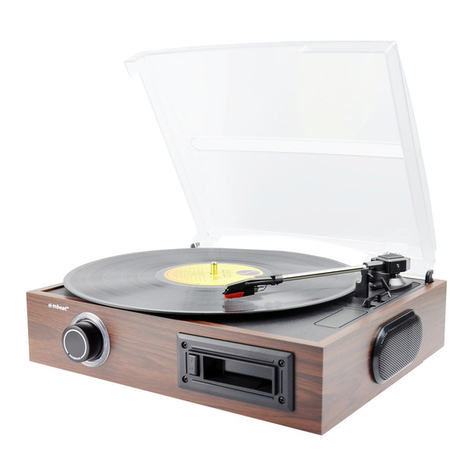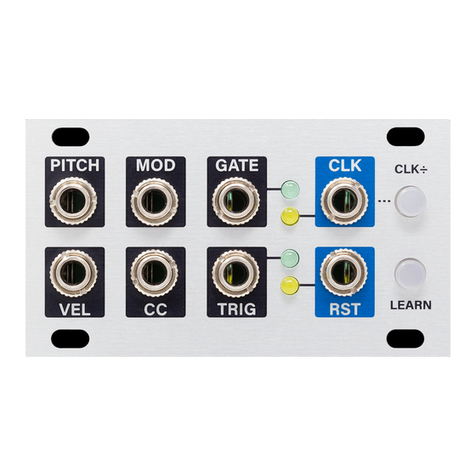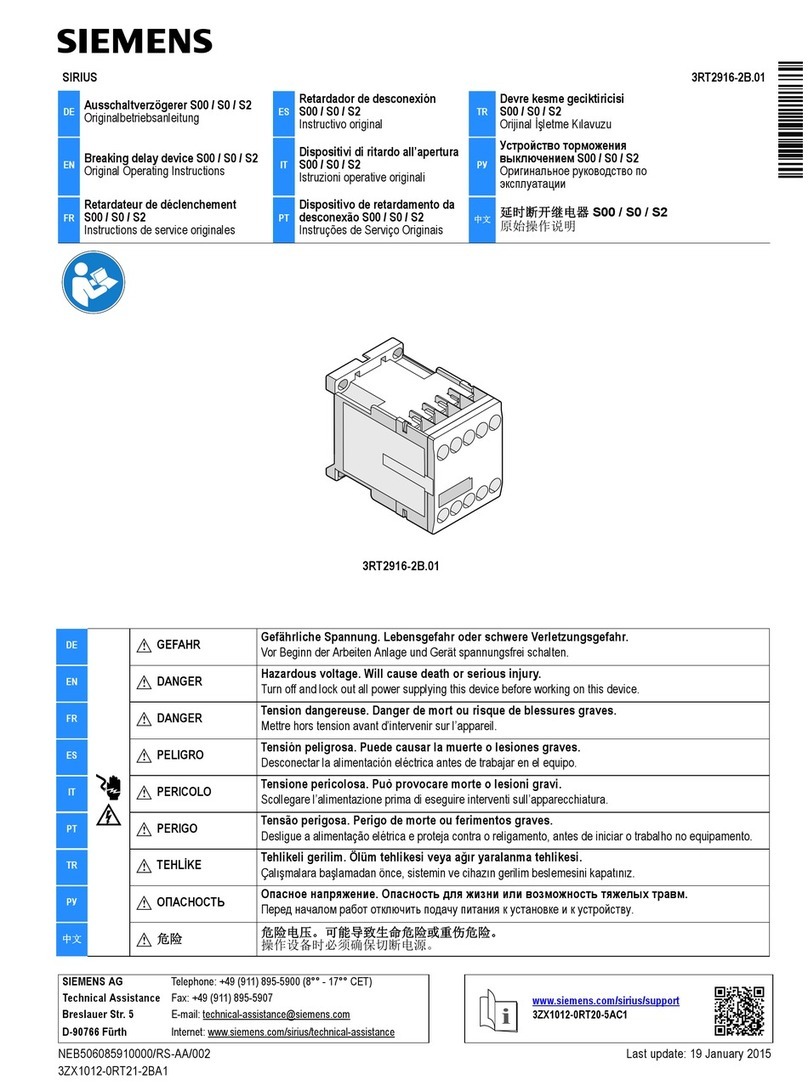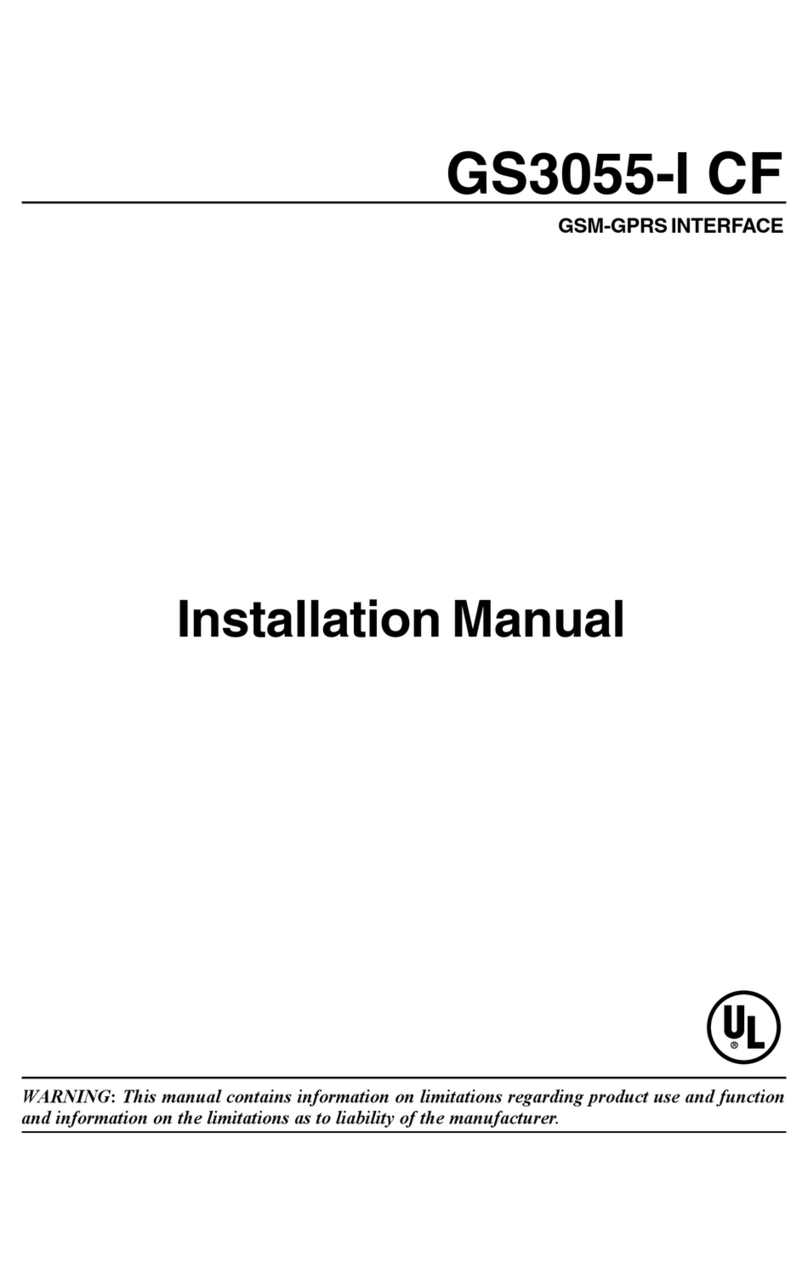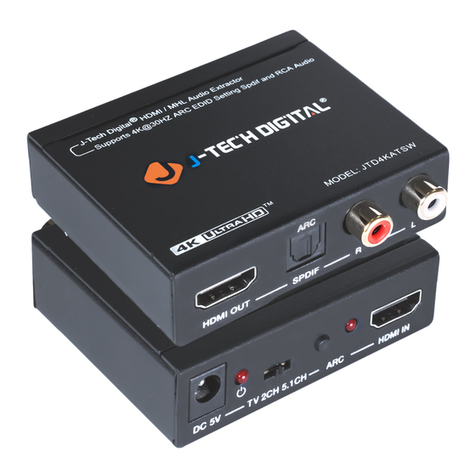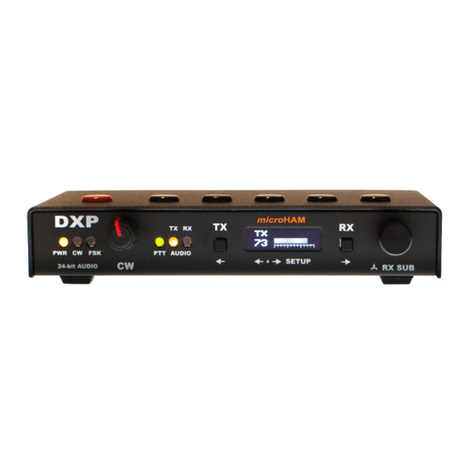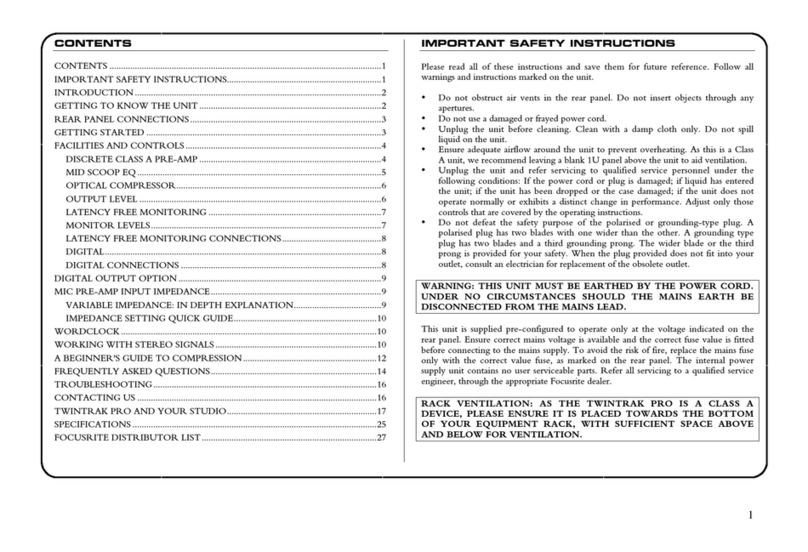Beatppl Modbap Modular Tinity User manual


II

IV

MODBAP MODULAR BY BEATPPL
Modbap Modular is a line of eurorack modular synthesizers and electronic
music instruments by Beatppl. Founded by Corry Banks (Bboytech),
Modbap Modular was born of the Modbap Movement with a simple
mission to dev tools for beat driven hiphop leaning modular artists. It is
our goal to develop eurorack modules from the beatmaker’s perspective
while adding value for music makers of all genres.
It’s almost impossible to explain Modbap Modular without answering the
questions; “So, what is ModBap?” MODBAP is the fusion of modular
synthesis and boom-bap (or any form of hiphop) music production. The
term was created by BBoyTech as a denotation of his experiments with
modular synthesis and boombap music production. From that point
forward, a movement was born where like minded creatives built a
community around idea of Modbap. Modbap Modular is in effect, the
result of that movement in a space where we’d previously not existed.
B U I L T F O R E U R O R A C K
DOPE E N O U G H F O R B O O M B A P !
www.modbap.com
About Us
1
1
About Us

2

TRINITY
Trinity is a 3 channel digital drum synth array contained in a single 20hp
eurorack module. Four digital drum synth algorithms are available to each
of Trinity’s 3 drum channels. The algorithms are; BLOCK, HEAP, NEON
and ARCADE. The array of digital drum synth algorithms are extremely
versatile and are controlled manually by the 7 knobs and also from an
external device using the associated CV inputs. These controls are; Pitch,
Sweep, Time, Shape, Grit, Decay, and Character. There are several
unique modes of operation. Cycle modes and Stack modes. The cycle
modes are; Round Robin which allows for each trigger to sequentially
activate different drum algorithms on each trigger while Random mode
will generate new parameter settings per trigger. Stack modes allow the
channels to be stacked together in layers of 2 or 3 voices to create
interesting sound designs options. There are also 4 mini-pot controls
which allow manual adjustment over EQ, Clipper, Hold and Volume. Each
drum channel represents a drum synth voice and has its own trigger and
V/Oct input in addition to extensive CV options per channel for external
control of the algorithm parameters. USB MIDI control is also an option.
An output routing stage allows for switching channels to the individual and
/ or mix outputs. Trinity allows saving of presets with the complete module
conguration in order to keep your drum sounds safely stored between
power cycles.
Overview
3
2
Overview

4
WHAT’S IN THE BOX?
The Trinity package comes with the following items included:-
• Trinity drum synth module.
• Eurorack IDC power ribbon cable
• 4 x 3m mounting screws.
• Sticker
• Quick start card deck
OPTIONAL ACCESSORIES?
The following items are not included with Trinity.
• Trinity full manual - available as a free download.
• Quick Reference Manual - available as a free download.
• A range of accessories such as patch cables, cable ties etc are available from
Modbap Modular.
Downloads are available from www.modbap.com
Overview

5
Overview
SPECIFICATION AND CORE FEATURES
• Module size. 3U, 20 HP, Depth 26mm
• +12V current demand 153mA.
• -12V current demand 7mA (160mA Peak on Power Up)
• +5V current demand 0mA
• 48kHz sample rate performance
• MIDI over USB Interface.
• 3 Channels / Voices
• 4 drum synth algorithms with cycle and random modes.
• 7 Knobs to control channel parameters plus CV control.
• 4 Mini Pots for additional parameters.
• 1V/Oct pitch control and trigger input per channel
• Switchable output mix routing.
• Individual channel mono outputs or mono summed mix out.
• Settings save / restore.
• Reverse polarity protection on the power input.

6
INSTALLATION
Follow the installation instructions carefully to avoid module or rack damage.
1. Ensure the power connection is disconnected before installing the device.
2. Identify an available location in the rack to install the module. Trinity needs
20HP of free space.
3. Connect the 10 pin connector from the IDC ribbon power cable to the header on
the rear side of the module. Ensure that the pins are aligned correctly. The red
stripe on the ribbon conductor closest to the -12V pin indicator on the header.
4. Insert the cable through the rack and connect the 16 pin side of the IDC ribbon
cable to the rack power supply header. Ensure that the pins are aligned
correctly with the red stripe on the ribbon conductor closest to the -12V pin on
the header in the rack power supply.
5. Mount and position the module into the dedicated rack position.
6. Attach the 4 x M3 screws by screwing into the 4 locator holes and the rack
mount. Do not over tighten.
7. Power up the rack and observe the module start up.
8. The device should now be ready to use.
Overview

7
Overview
Cable connected to PSU with red
conductor / edge aligned to the -12V pin.
This should be labelled on the board.
Cable connected to module with correct
orientation with red conductor / edge aligned
to the -12V pin. This should be labelled on
the module board with a white dash..
-12V
-12V
-12V
Eurorack Installation.
Ensure the following conditions are correct for trouble free installation.
• Rack power supply can accommodate all the installed modules total current ratings
and the rack earth / grounding is correct.
• Module power cable orientation is correct at both the rack and module side. Use
the module or rack supplied IDC ribbon cable.

8
21 34 96 5
12 13
14 16
7 10
15 17
8 11
18 29
20 31
22 33
24 26
19 30
32
34
21
23
25 27 3528
Overview
☞Press, Turn, Switch Plug and Patch

9
Trig/Sel. Triggers the drum channel or use Shift + Trig/Sel to silently select channel.
1
Cycle. Off, Round Robin, Random.
4
Stack. Off or layers the 2 or 3 voices, triggered simultaneously from input channel 1
5
Pitch. Adjusts the pitch of the selected drum channel.
6
Sweep. Amount of relative modulation applied to the channels pitch envelope.
7
Time. Controls the decay rate of the pitch envelope for the selected drum channel.
8
Shape. Shapes the sound of the selected drum channel.
9
Grit. Adjusts the noise and artefacts in the selected drum channel sound.
10
Decay. Adjusts the decay rate of the amp envelope .
11
Save. Saves the drum preset with the entire module conguration.
12
Shift. Used in conjunction with other functions to access its secondary option.
13
EQ Pot. DJ style state variable lter; LPF 50-0%, HPF 50-100%
14
Vol Pot. Volume level control of the selected drum channel.
15
Clipper Pot. Wave shaping to add a distortion type to the waveform.
16
Hold Pot. Adjusts the amp envelope hold time.
17
V/Oct. CV Input for Drum 1 Pitch control.
18
Trigger. Drum 1 Trigger input.
19
Character. Drum 1 CV Input to control character parameter.
20
Shape. Drum 1 CV Input to control the shape parameter.
21
Sweep. Drum 1 CV Input to control the sweep parameter.
22
Grit. Drum 1 CV Input to control the grit parameter.
23
Time. Drum 1 CV Input to control the time parameter.
24
Decay. Drum 1 CV Input to control the decay parameter.
25
Drum 2 CV Inputs. Applied same as Drum 1 - see 18-25
26
Drum 3 CV Inputs. Applied same as Drum 1 - see 18-25
27
USB Connection. Micro USB.
28
Drum 1 Individual channel mono audio output.
29
Drum 1 output routing switch. To mix only, drum1 only or all / both outputs
30
Drum 2 Individual channel mono audio output.
31
Drum 2 output routing switch. To mix only, drum2 only or all / both outputs
32
Drum 3 Individual channel mono audio output.
33
Drum 3 output routing switch. To mix only, drum3 only or all / both outputs
34
All Drums - Summed mono audio output.
35
Type. Selects one of the four algorithm types; Block, Heap, Neon, Arcade.
3
Character adjusts the timbre / primary synth parameter of the selected channel.
2
Overview

10
Overview
Type Cycle
CV
CV
CV Sweep
Shape
Time
Grit
Pitch
Character
CV
CV
CV
CV
Drum1 Mix
Trig
HeapBlock Neon Arcade
Pitch
Character
Grit
Shape
VCA
Envelope
Filter
Waveshaper
MixDrum1
Algorithm SelectionSound Engine
Output Stage
Decay Rate
Amount
Trig/Sel
Trig/Sel
Stack
Drum 2
Off
Muted
Drum 3
+
+
Decay
Clipper
EQ
Hold
Vol
All
Illustration shows drum channel 1. This
is replicated across all 3 drum channels
Stack Spread
Shift+Shape
Cycle
Off
Random
Or
Or

11
Overview
INPUT / OUTPUT ASSIGNMENT
CV and Trig inputs can be applied to the Trinity controls. Mono audio outputs have
switchable routing for individual mono or for mono summed mix outputs.
V/Oct Pitch Trig Shape Sweep
CV 0 - 5V > 1V +/- 5V +/- 5V
Grit Time Decay Character
CV +/- 5V +/- 5V +/- 5V +/- 5V
Audio Description
Mix Out Mono Audio output for selectable channels, summed as mono.
Drum X Mono Audio output for individual mono drum channel.

12

Trinity
Trinity is designed for easy operation. A series of rotary knobs allow
manual control of the voice parameters of the selected channel. In
addition CV inputs from other gear allow for external control. An additional
four mini potentiometers allow more manual control. Each channel is
easily selectable and can be muted, mixed or simply routed to its own
output. The power of Trinity comes from the instantly accessible panel
and controls while retaining a high level of versatility. Multiple options for
stacking channel voices or cycling algorithms and parameters are
available. Trinity also has a USB interface which operates as a MIDI
control interface. The drum voices can be triggered and control change
messages can be used to control parameters. Trinity offers a lot of sonic
features with no compromise on ease of use, all packed into a small 20HP
Eurorack form factor.
Panel Controls
13
3
Panel Controls

14
GETTING STARTED
Trinity is a 3 channel / voice drum module and is designed to offer highly exible
and creative sound design options for each channel in order to generate an array
of unique drum sounds. Sound shaping occurs within four algorithms. While users
will nd their own workow a good starting point is shown in this example.
Basic Operation Workow
Panel Controls
Set Default Starting
Parameters
Set an external trigger input of
use the channel trig button to
hear the sound.
Each of the 3 channels can have one of
the 4 dedicated algorithms assigned.
Each algorithm has its own distinct
character.
Option to globally stack and
spread channel voices 2 or 2
& 3 onto Channel 1.
Option per channel to create
interest by randomizing
parameters or cycle algorithms.
Adjust parameters to get the sound you want.
Pitch, Sweep, Time, Shape, Grit, Decay
EQ, Vol, Clipper, Hold
Preset can be stored and
recalled for future use
Mix or Route individual
outputs using the channel
switches
Default Trigger
Stack & Spread Cycle Mode
Parameters
SaveOutput Routing
Select Algorithm
E
S
Iterate settings, adjust, tweak
and turn to test and experiment
and nd a satisfactory sound.
Functions can be controlled by
CV and Trigs and patched to
develop creative sounds
Functions can only be
controlled manually to develop
creative sounds

15
Panel Controls
BASIC CONTROLS.
Trinity controls are simple to use. Turing rotaries affects parameters and buttons
trigger or select mode states. While values are assigned it is normal practice in
modular to adjust and tweak by ear. Several symbols represent features.
Large rotary controls adjust the selected channel parameters
manually and can also be controlled by external CV inputs. Turn
the control to adjust and tweak the amount, ideally while triggering
the channel to adjust by sound. The affect applied will be
dependant on the algorithm that is active.
Small potentiometer controls adjust the selected channel general
parameters manually. These parameters cannot be modulated by
external CV. Turn the control to adjust and tweak the amount,
ideally while triggering the channel to adjust by sound.
The Cycle and Stack buttons select specic mode states. These
are selected cyclicly by tapping the button and the associated LED
color will reect the mode selected or white when the mode is off.
The Type button selects the specic algorithm for the selected
channel. These are selected cyclicly by tapping the button and the
associated LED color will reect the type selected.
The Three Trig / Sel buttons manually trigger the respective
channel. When used with Shift button they select the channel
without triggering the sound.
The shift button is held in conjunction with pressing another button
or turning a control to access its secondary option. For example
Shift + Turn Shape to spread the stacked voices.
To save the parameters, MIDI settings, drums press Save.
Pressing Shift + Save to restore the save state..
SHIFT
SAVE
RESTORE
TRIG / SEL

16
Panel Controls
AUDIO OUTPUTS
Trinity has 3 individual channel, mono outputs, plus one summed mix, mono
output. The routing of channels between the single channel and mix output is
handled by the channel three position switch. Output connections take 3.5mm /
1/8th Inch TS (Tip & Sleeve) audio jack plugs.
The output contains only channel 1 audio.
This is repeated for Channel 2 & 3.
The output contains summed audio from
any routed channels.
DRUM : Switch Right - Blue LED
ALL : Switch Centre - White LED
MIX : Switch Left - Pink LED
The channel associated with the switch
will be routed only to its drum output.
This channel is not routed to mix out.
The channel associated with the switch
will be routed to its drum and mix output.
Audio is routed to both outputs.
The channel associated with the switch
will be routed only to the mix output. The
audio will not be output on drum channel.
To mute a channel set the drum output switch set to the individual drum i.e. DRUM1 and
ensure that the associated output is not patched.
+
Table of contents

